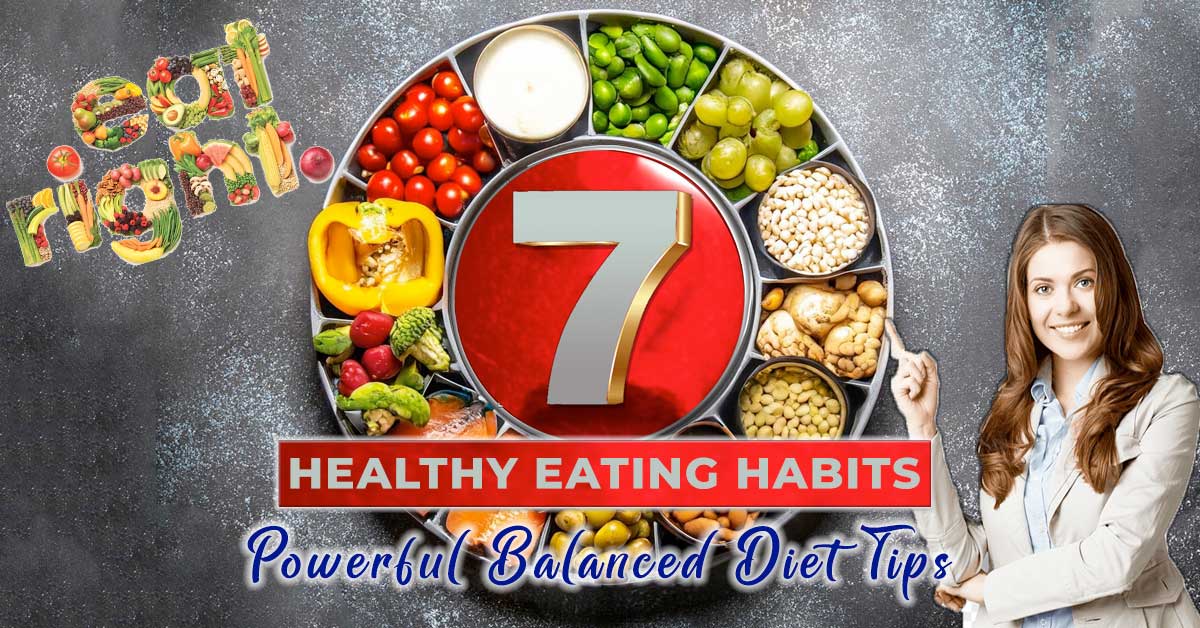Feeling sluggish, stressed, and unfocused? Your plate might be holding the key! Ever wondered: What is a balanced diet? Well! The naturally powerful 7 healthy eating habits can be your secret weapon to reclaim that vitality. Remember that vibrant, energized version of yourself? Be the one who conquers mornings by eating well.
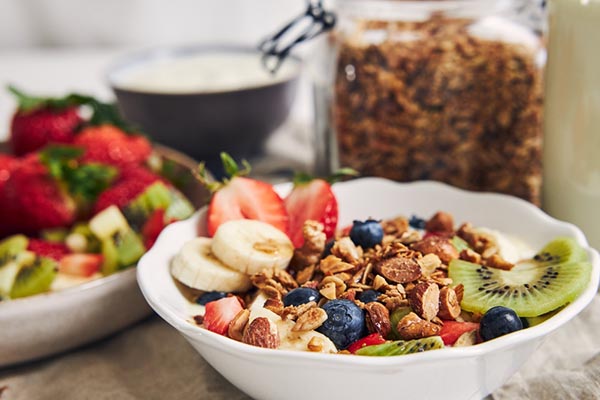
As a seasoned leader in the wellness industry, I’ve witnessed the transformative impact that simple shifts in our eating habits can have. I’ll share insights into good eating habits that can redefine the way you approach a healthy diet. Expect a roadmap of food recommendations for healthy nutrition. Food habits that prioritize eating for health through mindful food choices and nutrition.
How do I eat mindfully? Discover the secrets to mindful and nourishing eating. For a more energized, vibrant, and resilient version of yourself. Discover the magic of a balanced diet, and watch your “good food, good mood” mantra come alive! Picture this: a desk piled high with deadlines. The buzz of emails echoing in the background. The temptation of a quick, convenient snack. Remember to consider the profound influence that a healthy diet chart can have.
This article is not just about good food habit. Together, we’ll navigate the landscape of healthy eating. Also, during our journey, we will unlock the secrets to sustainable habits that nourish body and mind. Learn how nutrition influences well-being, fostering vitality and balance.
So, if you’re tired of fad diets and ready to make a lifestyle change with the best diet, read on. You’ll have the knowledge and tools to build naturally healthy eating habits in just a few minutes. Let’s embark on this journey of health tips, one bite at a time.
Also Read:
- Benefits of Tea: Creating Tranquility in a Busy World
- Miracle Multiples: Complete Resource for Healthy Twins and Triplets
- Japanese Concepts: Discover the Lessons For A Healthier Life
Optimize Your Health: Need for 7 Healthy Eating Habits
This is in tandem with our cornerstone article, “Optimize Your Health: 10 Steps To Stay Fit & Healthy.” Explore the significance of nurturing your well-being. Dive into health tips for a balanced diet. Seamlessly integrating the principles of “Everything in moderation.” Prioritize eating healthy food as your No-1 priority. Maintaining healthy eating habits is integral to supporting quality sleep. Discover the interplay between holistic health practices and mindful eating. Eating well is all about being aware. Be conscious about the true meaning of being healthy for an optimized and fulfilling life.
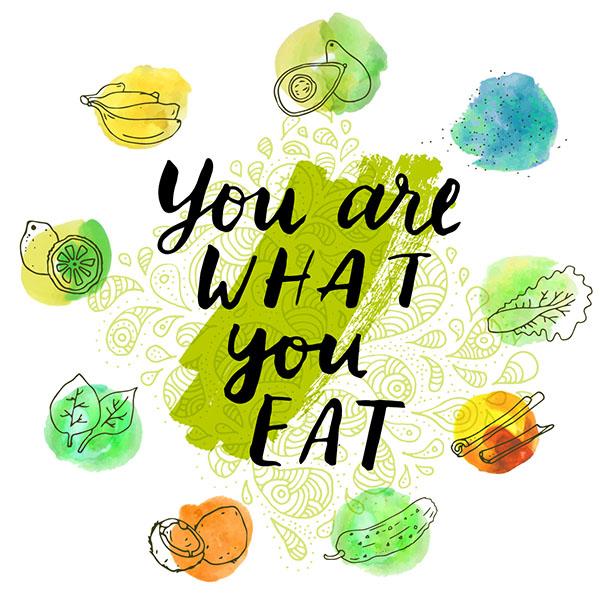
What is a Balanced Diet? Understanding Healthy Eating
The meaning of balanced diet: “eating a variety of nutritious foods in the right amounts”. It’s the key to good health, providing the energy and nutrients you need each day.
Nutrition is a Critical Part of Health and Development
WHO
Understanding the balanced diet definition is crucial for optimal health. It is the food habit approach of eating a variety of healthy nutrition in the right amounts. Calculate your nutrient score by evaluating your meals’ vitamins, minerals, and macro-nutrients. This dietary approach is the cornerstone of eating healthy food. Ensuring the provision of essential energy and nutrients required for daily well-being. Consider incorporating a harmonious blend of key elements into your meals.
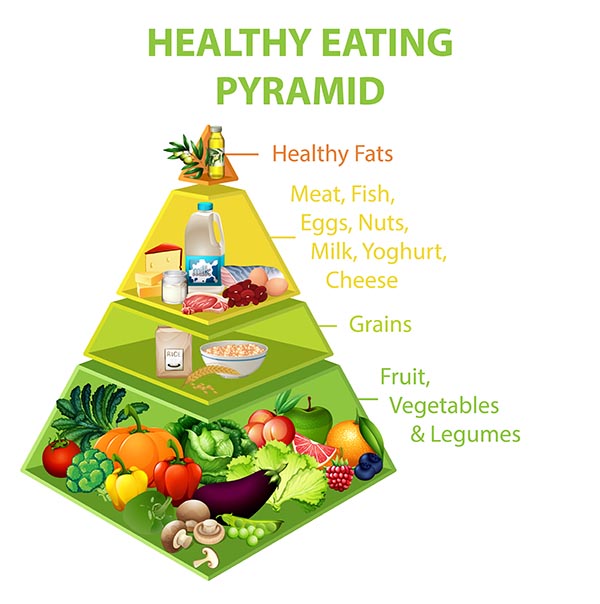
What to Include:
Embark on a path to well-being by embracing the essence of a balanced diet. When eating for health, utilize the nutrition tips with a plate model, food balance chart, and healthy diet chart. Aim for a well-rounded diet with these key food recommendations
- Lean Proteins (-): Incorporate sources like fish, nuts, and beans.
- Whole Grains (1.): Opt for whole grains over refined options.
- Fruits and Vegetables: Load up on vibrant colors for maximum nutrients.
- Healthy Fats (2.): Olive oil, avocados, and fatty fish.
Ensure hydration with plenty of water. Limit consumption of highly processed foods, red meat, full-fat dairy, and sweets. Moderation is vital to a sustainable and healthy eating pattern.
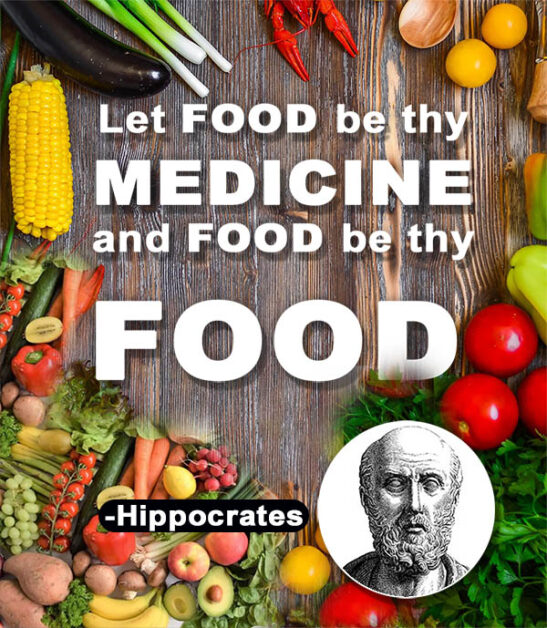
Image by Дарья Яковлева
How Much to Eat:
Moderation is vital to sustainable good eating habits. Embarking on a journey of good eating habits begins with understanding the essence of “what is a balanced diet.”
Nutrition experts at Harvard T.H. Chan School of Public Health, in collaboration with researchers at Harvard Health Publications, curated the Healthy Eating Plate for optimal well-being. The plate model guideline simplifies 7 healthy eating habits. Visualize your plate. It’s an easy formula for balanced meals.
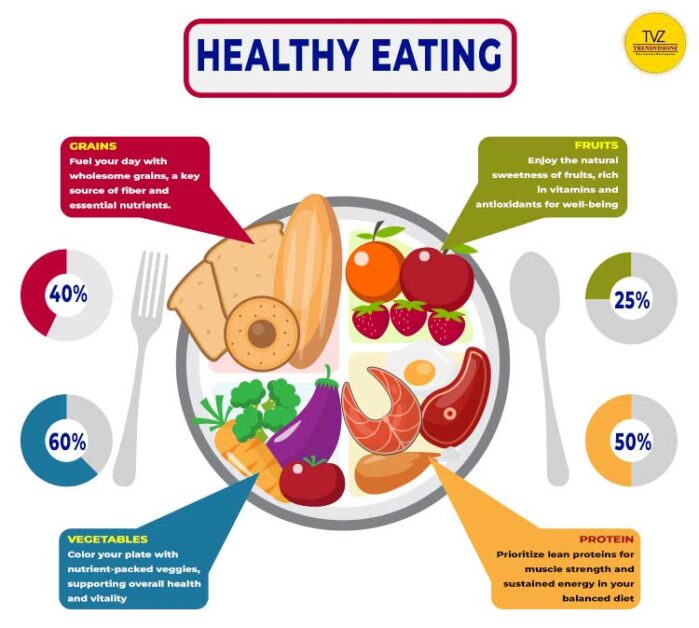
Follow a plate model guideline:
- Vegetables and fruits: Fill ½ Plate
- Whole grains: Allocate ¼ Plate
- Protein sources: Dedicate ¼ Plate
- Healthy Plant Oils: In Moderation
- Hydrate: Water, coffee, or tea.
- Stay active: Overall well-being
These visual aids serve as practical guides to promote balanced dietary habit. They are valuable tools for individuals eating well with food recommendations for the best diet. Always seek a simple and effective way to healthy nutrition for optimal health and well-being.
For a balanced diet, aim for specific servings:
- 5 to 6 ounces of protein per meal
- 3 to 5 servings of veggies
- 2 to 3 servings of fruit
- 5 to 8 grams of whole grains
Adhering to these guidelines cultivates lifelong healthy eating habits.
7 Healthy Eating Habits for a Balanced Diet
Developing good eating habits is vital to maintaining a balanced diet. Here are seven pointers to get you going:
In the quest for optimal health, cultivating good eating habits is paramount. Pairing healthy eating habits with regular exercise fosters overall well-being. Here are seven transformative tips to kickstart your journey:
1. Embrace Whole Foods
Prioritize nutrient-rich choices. Load up on vibrant fruits, veggies, whole grains, and lean proteins for a powerhouse of essential vitamins, minerals, and antioxidants.

2. Hydration Matters
Make water your go-to beverage for optimal hydration. Ditch sugary drinks and limit alcohol to ensure your body thrives on the purest and healthiest source of hydration.
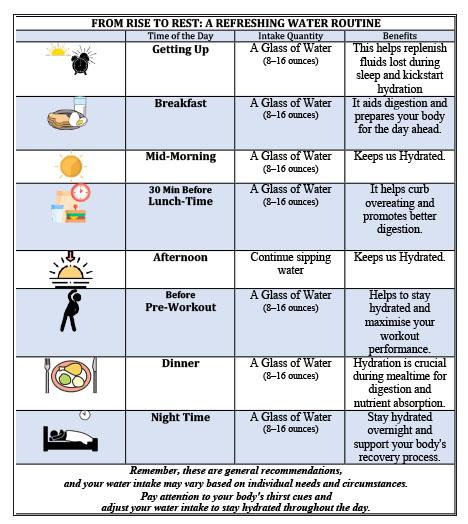
3. Protein-Packed Breakfasts
Kickstart your day with protein-rich goodness. Eggs, nuts, beans, and lean meats offer sustained energy and muscle support, setting a positive tone for the day.

4. Savor Every Bite
Transform your relationship with food. Eating slowly enhances satisfaction, prevents overindulgence, and fosters a mindful connection to the flavors and textures on your plate.
5. Portion Control
Navigate nutritional choices with precision. Be aware of serving sizes, especially for calorie-dense foods. Read labels and adhere to recommended portions for a balanced and controlled intake.
6. Master the Art of Meal Preparation
Efficiency meets nutrition. Plan and prep ahead for nutritious meals and snacks, ensuring a seamless integration of healthy choices into your daily routine, saving time, and promoting well-being.
7. Treat Yourself in Moderation
Indulge smartly. Enjoy occasional guilt-free treats, emphasizing moderation for a sustainable and balanced approach to gratifying your taste buds without compromising your overall health.
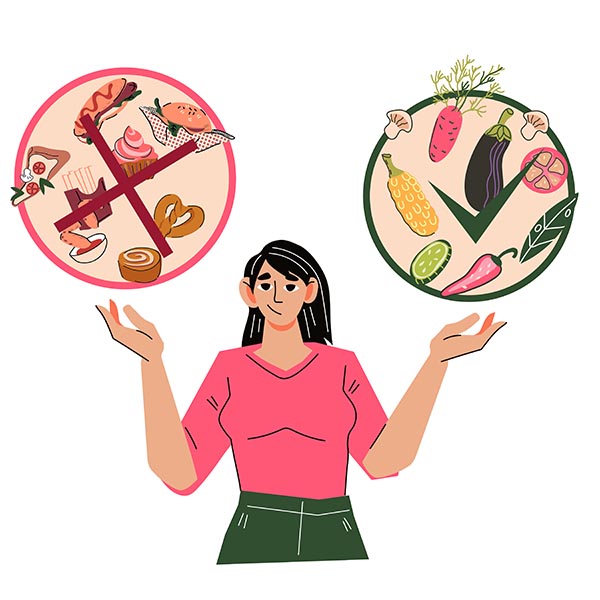
Developing these habits fosters vitality, helps maintain a healthy weight, and reduces the risk of diseases. Strive for balanced and nutritious choices, making them the cornerstone of your overall health and wellness journey.
Crafting a Nourishing Plate: Healthy Foods to Eat Everyday
Have you ever wondered how to eat healthy food every day? Explore simple yet effective strategies for a nourishing daily dining experience. Building a balanced palate starts with knowing what is the healthiest food. Let’s explore how to eat healthy food every day. And discover essential elements for your daily well-being.
To build a balanced plate, focus on lean proteins, whole grains, fruits and vegetables, and healthy fats.
Lean proteins
Choose fish, poultry, beans, and legumes that provide protein to satisfy you. Aim for 3 to 4 ounces per meal.
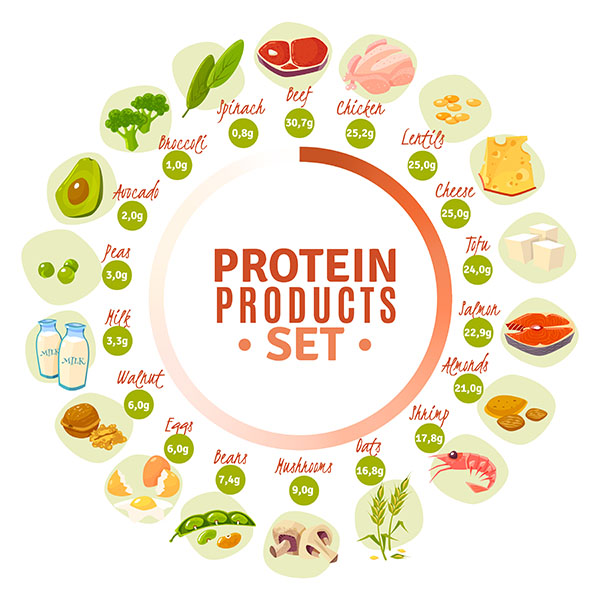
Whole grains
Opt for whole wheat bread, brown rice, quinoa, and oats. They are high in fiber and nutrients and help control blood sugar levels. Have about 1/2 cup per meal.
Fruits and Vegetables
Arrange a half of your dish with vibrantly colored fruits and vegetables. They provide vitamins, minerals, and antioxidants. Most people need 2 to 3 cups per day.
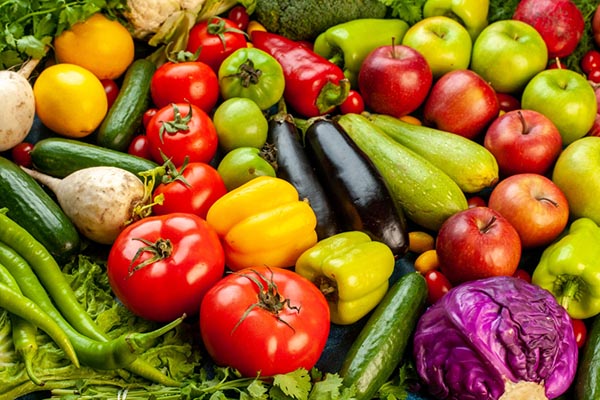
Functional Foods
Embrace a diverse range of functional foods to unlock a spectrum of nutrients. Enjoy enhanced vitality, digestion, and overall well-being. Functional Foods are rich in omega-3 fatty acids and antioxidants. They help in promoting heart health and general well-being.
Healthy Fats
Include a moderate portion of foods with monounsaturated fats (avocados, nuts) and omega-3 fatty acids (salmon, chia seeds). Limit saturated fat from red meat and full-fat dairy products. About 2 to 3 teaspoons per meal is enough.
Eating healthy food fills your body with energy and nutrients. Imagine your cells smiling back at you and saying: ‘Thank you!‘”
Karen Salmansohn, Self-help Author
Cultivating Healthy Eating Habits
Building the best diet palate involves more than just choosing food habits and a healthy diet chart. Take proactive steps to transform your eating habits:
- REFLECT: Assess your specific eating habits, recognizing positive and negative patterns. Identify common triggers for unhealthy eating.
- REPLACE: Swap out unhealthy eating habits with wholesome alternatives. Explore eating healthy food that aligns with your health goals.
- REINFORCE: Solidify positive change by reinforcing new 7 healthy eating habits. Establish a supportive environment that encourages sustained eating for health.
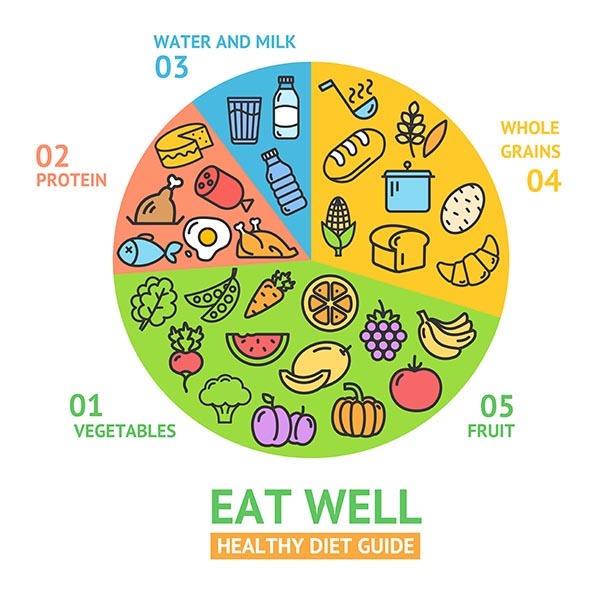
Follow these reflective and actionable steps and food recommendation for good eating habits. These health tips at each meal will help you eat healthy food and a balanced diet. Be mindful of eating food with food balance chart in mind for weight loss Indian diet. Enhance your journey towards a balanced and nourishing lifestyle.
Harnessing the Benefits: Mindful Eating for Health and Happiness
Mindful eating is focusing on eating with intention and purpose. Mindful eating promotes health and happiness by fostering a conscious and intentional relationship with food. To benefit from mindful eating, understand “how do I eat” and follow the simple health tips.

When you eat mindfully, you focus on the following:
- Slow down. Take small bites and truly taste the flavors and textures of your food. Appreciate each component of the meal.
- Avoid distractions. Don’t eat in front of the TV or computer or while reading. For eating well, make your meal the main event.
- Notice the sensations. Pay attention to your food’s smell, sounds, appearance, and feel. How does a healthy diet make you feel physically?
- Check in with your body. Eat when you feel hungry and stop when you’re satisfied, not overly full. Learn your body’s signals.
- Be grateful. Express gratitude for the healthy nutrition in front of you and everyone who made it possible. This simple act can enhance your satisfaction and enjoyment.
Mindful eating helps cultivate self-awareness and a balanced approach to nutrition. By slowing down and savoring each bite, you can break unhealthy habits and patterns with food. It leads to excellent health, happiness, and peace of mind. Give it a try—you have nothing to lose and everything to gain.
Embracing Healthy Nutrition: The Essence of Whole Foods
Whole foods are those food items that haven’t undergone processing or refining. They are as close to their natural form as possible. Choosing whole foods is one of the 7 healthy eating habits you can adopt. Whole foods, the nutritional powerhouse, stands as a pinnacle of health. Consuming them is a foundational healthy eating habit.
Rainbow Nature’s Nutritional Symphony: Fruits and Vegetables
Elevate your well-being with 5 to 10 servings of vibrant fruits and vegetables abundant in vitamins, minerals, and fiber.

Apples, bananas, and berries dance alongside nutrient-packed broccoli, spinach, and kale. Root for carrots, cucumbers, and tomatoes as they take center stage.
Nourishing Grains for a Wholesome Diet
Say farewell to refined grains and welcome the nutritional richness of brown rice, quinoa, oatmeal, and whole wheat bread. Millets are excellent examples of nourishing whole grains, offering diverse nutrients for optimal well-being.
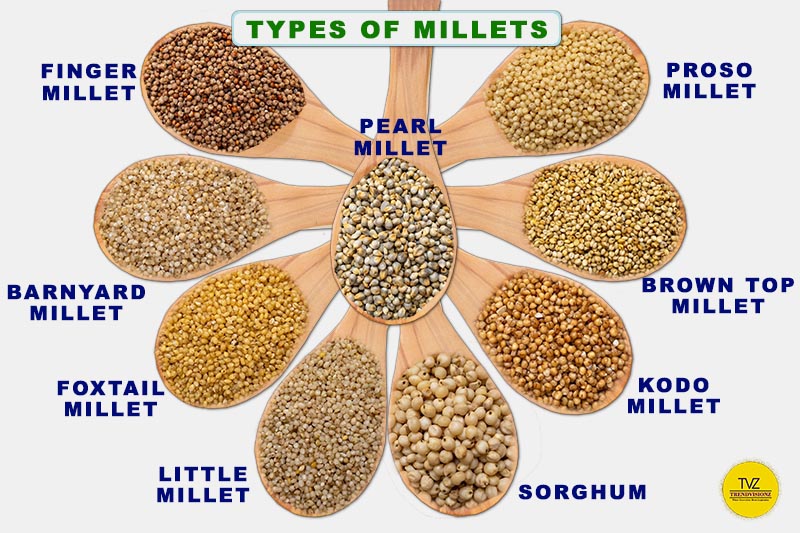
These whole grains provide sustained energy, fiber, and essential nutrients for a well-rounded diet.
The Food Habit Quest: Lean and Clean Protein
Protein is essential, not just for athletes but for everyone, as it builds, repairs, and energizes your body. Welcome to a journey where protein-rich foods become the cornerstone of your wellness story.
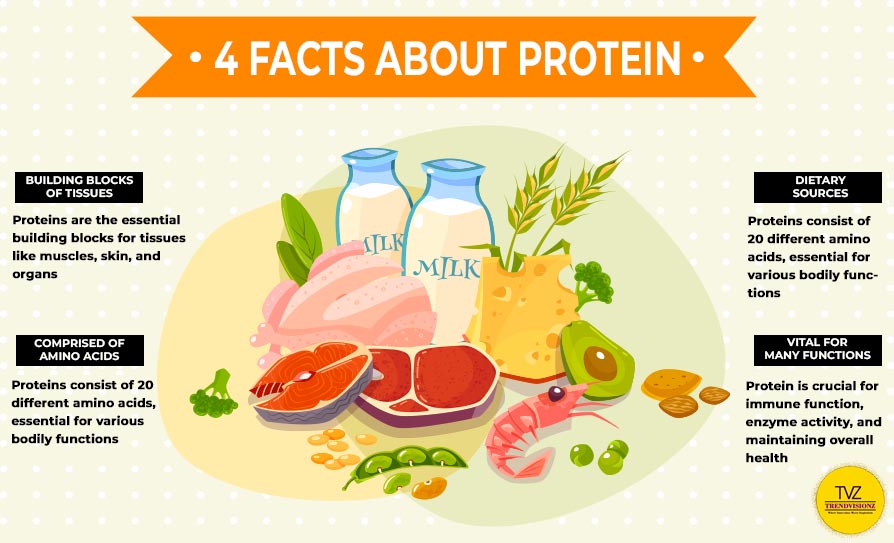
Embark on the dietary habit with a protein journey of lean choices:
- Chicken, fish, beans, and nuts.
- Opt for balance, limiting red meat and full-fat dairy.
- Discover good sources of protein for a high-protein diet.
A palette that fuels your body efficiently.
The Good Eating Habit: Nurturing with Healthy Fats
Not all fats are foes. Embrace the goodness of olive oil, avocados, nuts, and seeds. Limit saturated fat for heart-healthy choices.
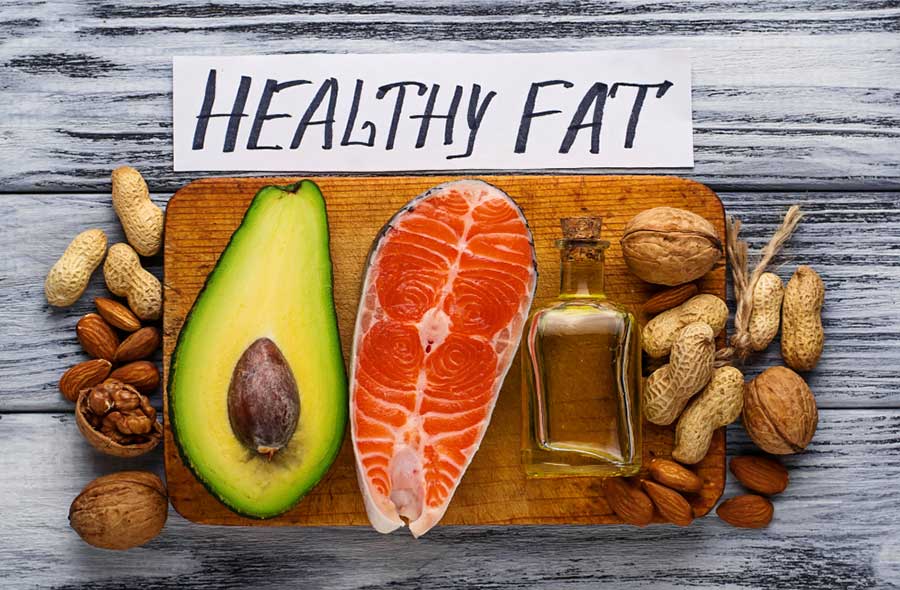
Transform your healthy diet by incorporating the food recommendations, supporting overall well-being. Choosing healthy nutrition options is one of the most potent ways to improve with the best diet. Fill your food habits with a variety of whole foods for balanced nutrition.
Optimal Hydration: A Cornerstone of a Balanced Diet
Explore the integral role hydration plays in fostering 7 healthy eating habits. Following the health tips ensure an adequate daily water intake. Following hydration recommendations is crucial for maintaining good health.

Drinking an ample amount of water brings forth numerous health advantages. Aim for six to eight glasses of water daily to enhance digestion and nutrient transportation:
- Combat fatigue and irritability by maintaining regular water intake.
- Sip water consistently throughout the day.
- Diversify hydration with alternative sources such as herbal tea, plant-based milk, and healthy beverages.
- Prioritize hydration for enhanced well-being, sustained energy, and mindful food choices.
Cheers to your health!
The Strategic Food Habits to Health: Mastering Meal Preparation
Embarking on a journey to good eating habits is a conscious decision. Success is achieved through strategic meal planning and preparation. A well-thought-out plan minimizes impulse purchases and promotes better choices.
Meal Planning Mastery: Healthy Diet
Devote time on the weekend to craft a week-long meal plan. Take stock of ingredients, ensuring a well-stocked kitchen with essentials like grains, beans, nuts, and frozen veggies. This proactive approach eases home cooking.

Prepping for Good Food Habit: Art of Advance Preparation
Bring your meal plan to life by preparing ingredients in advance. Washing veggies, cooking whole grains, and marinating proteins. Transform dinnertime chaos into a seamless experience, saving time, money, and stress.
Eating Well: Benefits of Planning and Prep
Embark on a transformative journey to health and efficiency through strategic meal planning. It is an investment in time and good eating habits with rich rewards.
- Save Time: Eliminate last-minute store trips and meal decisions.
- Save Money: Reduce food waste and curb impulse buys. Eat Healthier: Enjoy nutrient-rich, home-cooked meals.
- Reduce Stress: Know your daily meals in advance, fostering a sense of control.
Efficient planning and preparation may seem meticulous. But the dividends it pays to your health, budget, and food habits make it invaluable. Take the plunge—you’ll appreciate the rewards!
The Power of Uncommon Superfoods: Healthy Nutrition
Superfoods are nutrient-dense foods rich in vitamins, minerals, and antioxidants, contributing to overall health and well-being. The prime examples of superfoods, spinach, kale, blueberries, and salmon, often take the spotlight. These staples are undoubtedly nutritional powerhouses. But a world of rare superfoods can offer an extraordinary boost to your overall health.
Exploring Rare Superfoods List
Explore underused superfoods for healthy nutrition. In an era prioritizing eating for health, these nutritional powerhouses provide essential nutrients for best diet.
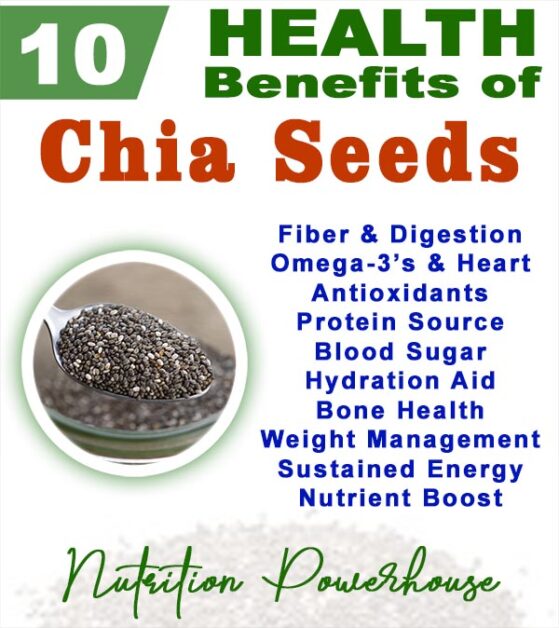
1. Maca Powder
Derived from a Peruvian root vegetable, Maca Powder isn’t just an earthy addition to your pantry; it’s a nutritional dynamo. Bursting with essential vitamins and minerals. Rich in especially vitamin C, copper, and iron. Maca Powder provides an energy kick and may contribute to hormone balance. Sprinkle a teaspoon into your daily smoothies, oatmeal, or yogurt for a delightful and nutritious twist.
2. Nutritional Yeast
Despite its misleading name, Nutritional Yeast is different from brewer’s yeast. This deactivated yeast variety is a protein and B-vitamin powerhouse with a savory, cheesy flavor. Packed with folate, B6, and B12, it adds a nutrient boost to your salads, grains, or even popcorn. Embrace its versatility and enhance your meals with this underrated gem.
3. Lucuma Powder
Hailing from a Peruvian fruit known as the “gold of the Incas,” Lucuma Powder is a natural sweetener with notes of maple and molasses. It is low in sugar yet rich in antioxidants. It’s a guilt-free way to add sweetness to your smoothies, oatmeal, or desserts. Elevate your culinary creations with this exotic yet nourishing ingredient.
4. Moringa Powder
Originating from the moringa tree in India, Moringa Powder boasts potent green powdered leaves that make it one of the most nutrient-dense greens globally. Packed with protein, iron, calcium, and antioxidants, it’s a stellar addition to your daily smoothies. Infuse your diet with a concentrated burst of essential nutrients.
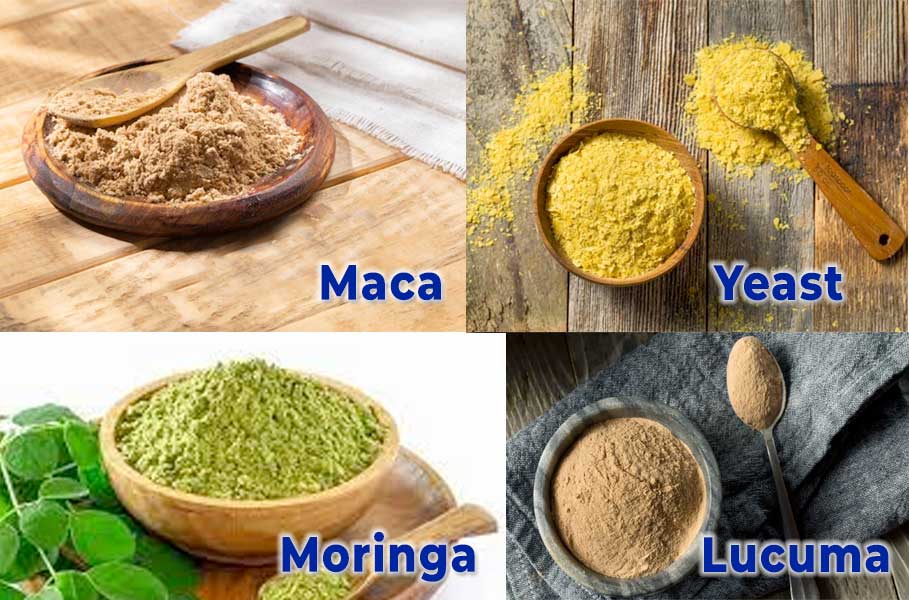
Practical Incorporation and Sourcing Tips
Considering these superfoods for your diet?
These superfoods are often available at health food stores, specialty grocery stores, or online retailers. Start with small amounts to gauge your taste preferences when incorporating them into your meals. These nutritional powerhouses can easily make a healthy diet chart of your daily routine.
Experiment, enjoy, and let the extraordinary benefits of these uncommon superfoods redefine your approach to optimal nutrition.
Social and Cultural Influences on Healthy Eating
Culture and society greatly influence the types of foods we eat and our food habits. Your family, friends, and community shape your views on the best diet from an early age.
Culture and Food: A Culinary Tapestry
Beyond mere sustenance, food weaves deeply into the fabric of our lives. Good food habits intertwine cultural traditions, social connections, and personal histories. We cherish stories of heritage, community, and identity. This diverse tapestry of culinary experiences shapes our palates and preferences.
Cultural Influences:
- Traditional Meals: Holidays and rituals often revolve around specific dishes. Forging powerful links between food and cultural memory.
- Staple Foods: Cultural backgrounds define everyday dietary habits. These staples shape the foundation of our diets.
- Regional Cuisines: Cultural exchange and diversity give rise to unique regional cuisines. Like Cajun or Tex-Mex, enriching our culinary landscape.
- Immigrant Influence: Dishes from immigrant communities become embedded in mainstream culture. Thus broadening our culinary horizons and best diet.
Social Impact:
- Family and Friends: Early food experiences within families and communities shape lifelong preferences and good food habits.
- Peer Pressure: Social norms and trends can influence food habits. Impacting dietary balance.
- Media and Marketing: Media representations and advertising shape perceptions of a healthy diet and influence food recommendations.
Embracing Diversity:
- Expanding our palates by trying new cuisines from different cultures can lead to healthy eating habits.
- Understanding the cultural context behind food fosters appreciation and respect for diverse culinary traditions.
We can make informed diet decisions by recognizing the influence of culture and society on our food habits. Embrace culinary diversity, and cultivate a good eating habits.
Consistency: The Key to Success in Healthy Eating
The key to success in any endeavor is consistency. Healthy eating is no different. Making good choices at each meal every day will significantly impact your health and waistline.

Mealtime Routine: Long-Term Health Tip
Establish a regular pattern for your meals and snacks. Eat roughly the exact times each day, and your body will adapt. These good eating habits will make you feel hungrier around mealtimes. Plan your meals so you have healthy nutrition on hand. And you aren’t scrambling last minute.
Fuelling Your Day: The Importance of a Balanced Breakfast
Mornings often set the tone for our day. Start with a hearty breakfast to fuel their activities. A balanced breakfast gives you energy and focus for the day ahead. Include lean protein, high-fiber whole grains, fruit, and healthy fats like nuts or avocado. Some options:
- Oatmeal with fruit and nuts
- A veggie omelet with whole-grain toast
- A smoothie with Greek yogurt and berries
Smart Snacking: Satisfy Hunger Between Meals
Have satisfying snacks on hand so you avoid getting too hungry between meals. Fresh or dried fruit, vegetables and hummus, Greek yogurt, trail mix, or a protein shake are all good options. Limit sweets, chips, and processed bars.
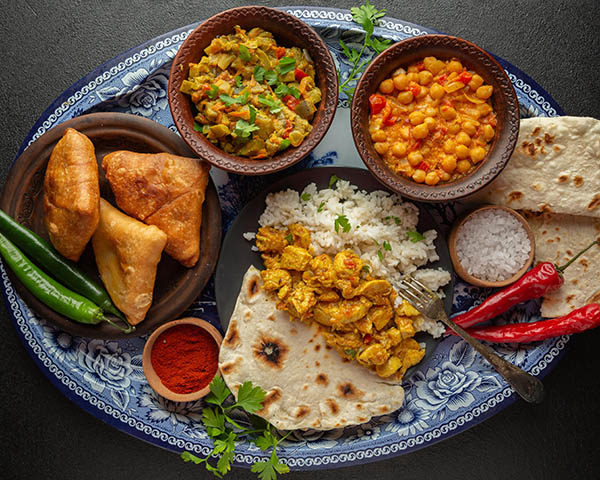
Staying consistent with healthy eating habits leads to success. Your balanced diet and long-term health goals will be in reach through the power of consistency.
Also Read:
FAQ: 7 Healthy Eating Habits
Are millets considered whole grains?
Yes, millets are whole grains. These nutrient-rich grains offer a plethora of vitamins, minerals, and fiber, contributing to a wholesome and balanced diet.
What are the basic principles of a healthy diet?
A healthy diet should be:
- Balanced: Include a variety of foods from all food groups, such as fruits, vegetables, whole grains, lean protein, and healthy fats.
- Moderation: Eat enough to meet your needs, but only a little. Be mindful of serving sizes and refrain from excessive eating.
- Nutrient-rich: Choose foods packed with nutrients, such as vitamins, minerals, and fiber. Limit processed meals, sugary drinks, and unhealthy fats.
How can I make healthy eating choices when on the go?
It’s easy to make healthy choices even when busy. Here are some tips:
- Plan your meals and snacks, so you’re not tempted to eat unhealthy foods when hungry.
- Prepare wholesome meals and snacks to carry with you wherever you go.
- Choose healthy eating options, such as grilled chicken or fish with a salad.
Remember, making minor changes to your diet can make a big difference in your health. Begin by adding one or two healthful practices to your daily schedule, then go up from there.
Conclusion
So there you have it: adopting 7 healthy eating habits can significantly improve your overall well-being. Now equipped with the knowledge of what is a balanced diet, you can make informed choices to cultivate good eating habits.
Healthy eating habits play a crucial role in aging gracefully. By fueling your body you can enhance your overall well-being and age with vitality. Embracing food recommendations during meals fosters a conscious connection with your food habits. Eating well and being mindful promotes a healthier relationship. Dietary habits add diversity to your best diet. And contributes to a more robust healthy diet chart.
Consistency is the cornerstone of success. Make 7 healthy eating habits a part of your daily routine. This will yield long-term health benefits. Strategic meal planning streamlines your approach to good eating habits.
How do I eat? This question holds the key to making it easier to maintain a healthy diet. Adopting mindful and intentional eating habits can transform your relationship with food. In eating for health, remember that progress is critical. Incorporate good food habits gradually. Our health tips will help cultivate a sustainable and positive impact on your health.
Prioritize your well-being, and the rewards—increased energy & improved mood.
Enhanced overall health—will naturally follow.
Our Digital Imprints:
Anuj Mahajan is a Mass Communication Specialist,
ICF Certified Coach & Corporate Trainer. Motivational Speaker / NLP Lifecoach.
Chief Operating Officer: Nuteq Entertainment Pvt Ltd, and
Co-Founder: Trendvisionz – A Premier Digital Marketing Agency in India
Get Connected to us with our Newsletters-Transforming Lives… Creating the magic. Just – Believe ~ Practice ~ PerformBizTech Chronicle… Navigating Tomorrow’s Tech Frontiers 🚀
Join my LinkedIn Group: Digital Marketing, Content Creation World Group
Follow me on Twitter or LinkedIn. Check out my website.
